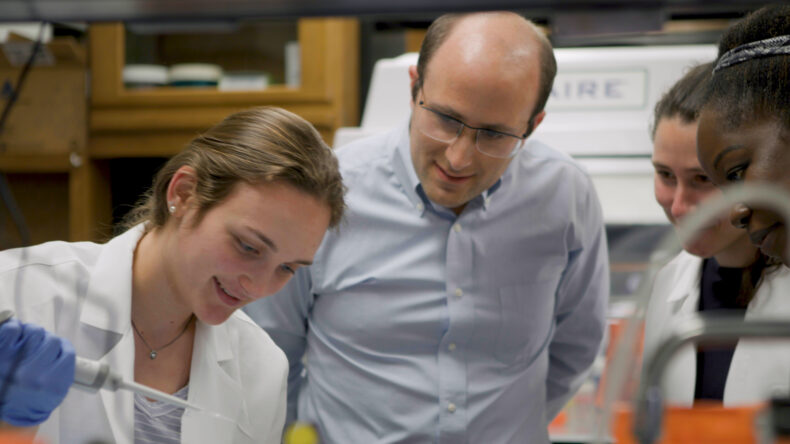A simple blood test known as a proteomic profile can predict a patient’s cardiorespiratory fitness (CRF), and those with the most fitness can reduce their risk of mortality by 50%, a Vanderbilt-led study recently found.
The research was the result of a large, transnational team of investigators, led by first author Andrew Perry, MD, instructor in Medicine, Eric Farber-Eger, principal app developer, Quinn Wells, MD, PharmD, associate professor of Medicine, and Ravi Shah, MD, professor of Medicine. The research was recently published in the journal Nature Medicine.
Exercise has long been associated with better health outcomes across a variety of organs and disease states, Perry said. Ascertaining CRF has traditionally required some form of a stress test or exercise test — procedures that require specialized equipment and several technicians to complete.
The research from the VUMC group tested the feasibility of an alternative method: a simple set of proteins from blood that may capture a molecular fingerprint of CRF. This lower-barrier method could help providers determine a patient’s heart health and their health across a variety of other systems that are impacted by CRF, including the brain, vascular and musculoskeletal systems.
“One could potentially do this from a small, targeted panel of proteins that could be deployed within a clinical setting,” Perry said. “The panel of proteins linked to a person’s cardiorespiratory fitness level was strongly associated with future risk of clinical events, spanning everything from heart attacks to strokes, heart failure to diabetes.”
Researchers studied more than 14,000 patients from NIH-funded studies in the United States and the United Kingdom across a range of metabolic health. They found that the molecular fingerprint of how an individual performed on a fitness test was linked to a broad array of diseases and cardiometabolic health conditions and was additive to polygenic estimates of risk (a patient’s genetic risk for certain diseases).
Ultimately, whether measured by supervised exercise testing or this blood biomarker, Perry emphasized that achieving and maintaining fitness is a strong predictor of overall health, revealed now through a protein panel in the circulation.
“Individuals who have greater physical fitness have better outcomes,” Perry said. “The tool here provides a glimpse into personalized medicine approaches that may ultimately be deployed in clinical care to guide conversations between patients and providers to guide metabolic interventions, including exercise, to improve health.”














